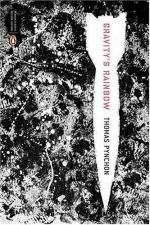|
This section contains 1,129 words (approx. 4 pages at 300 words per page) |

|
SOURCE: Turier, Christine. “Pynchon's Gravity's Rainbow.” Explicator 50, no. 4 (summer 1992): 244-46.
In the following essay, Turier identifies the artistic and scientific sources of the octopus Grigori's attack on Katje in Gravity's Rainbow.
The bizarreness of the image of the octopus Grigori's attack on Katje in Gravity's Rainbow, together with the orchestration of that attack by the mad Pavlovian Pointsman, stamps it with a typically “Pynchonian” uniqueness. Yet it is not the singular product of an eccentric imagination but another example of Pynchon's extreme eclecticism. For the octopus combines two radically different sources: one, that of early Japanese art; the other, the field of neurobiology. The image of a woman being “attacked” by a giant octopus is, in fact, not uncommon in early Japanese art.1 It is best known in the West through the rendition of Katsushika Hokusai. Reproduced as “The Dream of the Fisherman's Wife”2 in Lucie-Smith's Eroticism in...
|
This section contains 1,129 words (approx. 4 pages at 300 words per page) |

|


